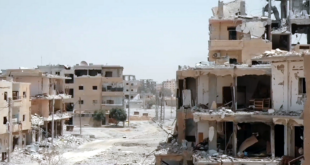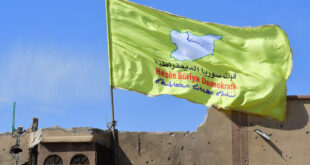Ukraine has urged Germany to provide the stealth battle tanks but NATO allies have failed to agree on the transfer amid Russian threats.
Germany is under intense pressure to provide Ukraine with its Leopard 2 tanks, which could have a significant impact against the Russian invasion.
European allies have already sent hundreds of modernised Soviet tanks to Ukraine since the war started nearly 11 months ago. But Kyiv has pleaded for more advanced military equipment to get the upper hand in the fight against Russia.
The United States and its allies failed to agree to supply the coveted German battle tanks to Ukraine at a meeting on Friday, as Russia continued to issue threats the conflict may escalate in Europe.
Leopard 2 tanks are considered one of the best-performing models worldwide and are widely used across Europe.
Why are the Leopards so coveted?
Leopard was first produced in the late 1970s to replace the American M48 Patton and soon became renowned for its firepower, mobility, and sturdy armour.
Leopard 2 is “sort of like the [Volkswagen] Golf of the German tank industry: an all-rounder with world recognition”, according to the German newspaper Frankfurter Allgemeine Zeitung.
About 3,500 of the 60-tonne battle tanks, developed by German weapons manufacturer Krauss-Maffei Wegmann (KMW), have been produced.
The tanks are armed with a 120mm smoothbore cannon and can move at speeds of up to 70 kilometres (44 miles) per hour with a range of 500km (310 miles). They also provide “all-round protection” for troops from threats such as mines, anti-tank fire, and improvised explosive devices, according to the manufacturer.
The last four models produced are still in use – from the 2A4 to the 2A7.
What is stopping the supply?
Germany has been reluctant to provide the tanks to Ukraine because of the anti-militarism position it adopted after World War II. However, pressure has been mounting on Germany and it has been put in a difficult position.
Poland has expressed willingness to send 14 Leopard tanks to Ukraine as part of an international coalition. Finland said it is not opposed to shipments.
But countries cannot send the tanks without Germany’s approval as they are supplied under a German licence.
Polish Prime Minister Mateusz Morawiecki has suggested Poland could send Leopard tanks to Ukraine without Germany’s blessing.
It is not clear yet how quickly any tanks would arrive. German weapons manufacturer Rheinmetall, which produces the Leopard’s cannon and electronics and has dozens of older models, has said it would not be able to deliver any of the tanks until 2024 because of the need to refurbish and repair them.
What is Russia saying?
Some analysts have said supplying the Leopards could further escalate the conflict with Russia, if it were construed as the direct involvement of NATO countries in the war.
Russia has warned of an “extremely dangerous” escalation if NATO were to deploy high-tech weapons. The introduction of such weapons, according to Kremlin spokesperson Dmitry Peskov would bring the war to “a whole new level, which, of course, will not bode well from the point of view of global and pan-European security.”
Anatoly Antonov, Moscow’s ambassador to the US, said Russia would retaliate if Ukraine were to use Western-supplied weapons to target Russia or the Crimea Peninsula.
Former Russian President Dmitry Medvedev, now a senior security official, warned the West’s continued support for Ukraine could lead to nuclear war.
What impact could the Leopards have?
Supplying Ukraine with about 100 tanks could make a “significant” difference in the war, according to the UK-based International Institute for Strategic Studies.
“An army can break through enemy lines and put an end to a long period of trench warfare,” Rheinmetall CEO Armin Papperger told Germany’s Bild newspaper. “With the Leopard soldiers can advance dozens of kilometres at a time.”
But Ukrainian troops would need to be rapidly trained to use the equipment, whose operations are much more complicated than the Soviet-era tanks.
The Ukrainian military would also be trying to get up to speed on other new hardware set to arrive in Ukraine, including recently pledged French AMX-10 RC light tanks, German Marder infantry vehicles, and Bradley fighting vehicles from the United States.
 Eurasia Press & News
Eurasia Press & News



